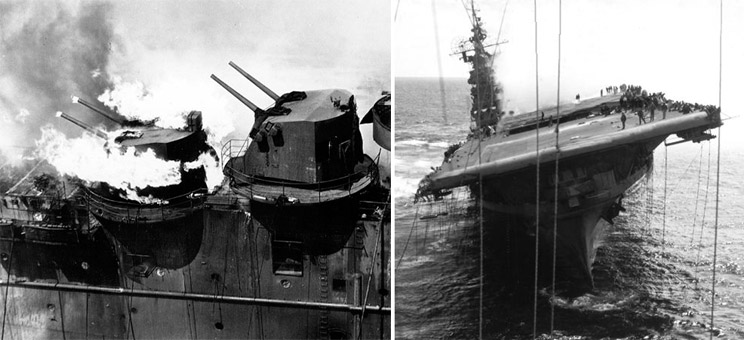Now It Can Be Told! - 'Operation Pluto'
The War Illustrated, Volume 9, No. 209, Page 120, June 22, 1945.
One of the Greatest supply stories of the war was released on May 23, 1945, when the existence of an oil pipeline system across the bed of the Channel to the Continent was revealed. This all-British triumph of engineering and seamanship, known officially as Operation Pluto, solved one of the master problems of the whole war, enabling 1,000,000 gallons of petrol to be pumped daily, from a few weeks after D-Day, through the submarine pipe-way into France and later deep into Germany, supplying the entire petrol requirements of Montgomery's Armies. By V Day over 120,000,000 gallons had thus been transported.
From tankers discharging at our ports the petrol was conveyed across Britain, through a network of pipelines, to cleverly concealed coastal high-pressure pumping stations, staffed by R.A.S.C. personnel, whence it was received by the submarine pipes. The latter, of 3-in. steel tubing, were laid under the supervision of the Royal Navy, ships of all sizes, comprising “Force Pluto”, manned by Merchant Navy seamen, being engaged.
For paying-out, the tubing was wound on floating drums each 40 ft. in diameter, 60 ft. long, carrying 70 miles of it, and weighing 1,600 tons. Many of the various laying operations were completed under adverse weather conditions and against strong tides; 500 miles of this pipeline were laid between Dungeness and Boulogne, to name only two points. The title “Pluto” is made up of the initial letters of Pipe Line Under The Ocean.
Previous and next article from Now It Can Be Told!
Now It Can Be Told: Ark Royal & Graf Spee
As a previous page under this heading indicated (Vol. 1, p. 511) this section is reserved for stories of historic incidents of which new and fuller details become available at later dates. Here are im
Now It Can Be Told! - 'Operation Fido': Beating Airfield Fog
Within about 15 minutes of the light-up order being given, a fog enshrouded airfield can be completely cleared of this greatest natural enemy of the airman. The miracle is performed by "Fido"
Index
Previous article
I Was There! - In the Nightmare City of Rangoon Today
The Burmese capital was reoccupied by British forces on May 3, 1945, after nearly three years' occupation by the Japanese. How the once lovely city had been transformed by the enemy to a horror almost
Next article
I Was There! - Blasted for Hours Off the Coast of Japan
How Japanese bombs struck the 27,000-tons aircraft carrier U.S.S. Franklin on March 19, about 60 miles off the southern coast of Japan, causing one of the most appalling losses of American lives in na




